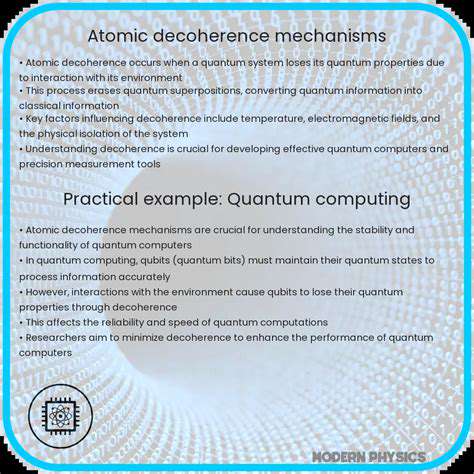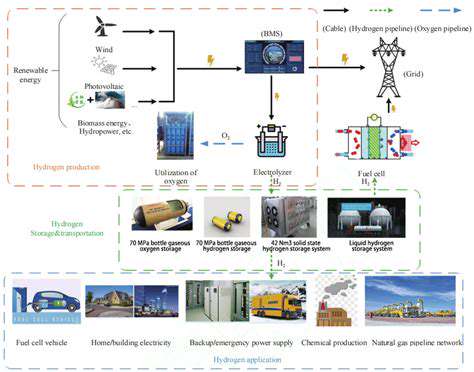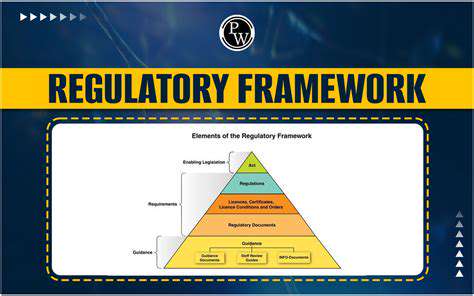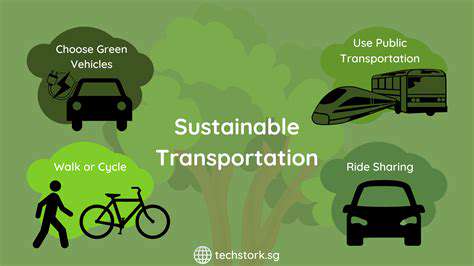Grid Services from Energy Storage Systems
Primary frequency response is the initial, rapid adjustment to frequency changes. Energy storage systems excel at this, often responding within seconds to maintain grid stability. This rapid response minimizes the impact of sudden disturbances and ensures the grid maintains its intended frequency. This is a critical function for maintaining reliability and preventing larger issues.
The speed at which ESS can provide primary response is a key factor in determining their value to the grid. Faster response times lead to a more stable and reliable power system. This contributes to a reduction in the need for other ancillary services and ultimately reduces operational costs.
Ancillary Services: Secondary Response
Secondary frequency control involves restoring frequency to its nominal value after the initial primary response. Energy storage systems can play a significant role in this process. By precisely adjusting their power output, ESS can contribute to maintaining the desired frequency level, ensuring the grid operates smoothly and reliably.
Ancillary Services: Tertiary Response
Tertiary response is the long-term adjustment of generation to maintain frequency. While not as fast as primary response, ESS can participate in tertiary control, contributing to the overall stability of the grid. The longer-term adjustments required for tertiary response allow for efficient management of generation and consumption, improving grid efficiency over time.
Grid Stability and Reliability
Energy storage systems significantly enhance grid stability and reliability through their ability to provide ancillary services. By responding quickly to frequency deviations and contributing to overall grid management, ESS minimize the risk of outages and disruptions. This increased stability contributes to a more resilient and dependable power system.
The integration of energy storage systems into grid operations allows for greater flexibility and resilience. This enhanced resilience is critical in modern power systems, where there's a growing need to accommodate intermittent renewable energy sources. This capability is crucial for the transition to a more sustainable energy future.
Economic Benefits and Cost-Effectiveness
The use of energy storage systems for frequency regulation and ancillary services offers significant economic benefits. By reducing the need for expensive and complex conventional generation adjustments, ESS can lower operational costs for power grids. This efficiency is a key factor in the economic viability of integrating renewable energy sources.
The cost-effectiveness of ESS in providing grid services is becoming increasingly attractive as the technology matures and becomes more affordable. The long-term benefits of increased grid stability and reliability, combined with potential cost savings, make energy storage a valuable asset for modern power systems.
Peak Shaving and Load Balancing
Peak Shaving
Peak shaving is a crucial energy management strategy that aims to reduce the peak demand for electricity during periods of high energy consumption. By employing energy storage systems, utilities and industrial consumers can effectively shift energy usage from peak demand times to off-peak hours. This results in a smoother, more predictable electricity load curve, reducing the need for costly upgrades to the power grid infrastructure and improving overall system reliability. This approach is particularly beneficial in managing intermittent renewable energy sources like solar and wind, ensuring a stable and reliable power supply.
The process involves storing excess energy generated during off-peak hours, such as nighttime or periods of low solar/wind output, and releasing it during peak demand periods. This controlled release of stored energy helps to flatten the demand curve, reducing the strain on the grid and minimizing the need for additional generating capacity. Furthermore, peak shaving contributes to lower energy costs for consumers by enabling them to avoid higher electricity prices associated with peak demand.
Load Balancing
Load balancing, in the context of energy storage, involves distributing the electrical load across the grid more evenly throughout the day. This strategy is particularly relevant in managing the fluctuations in renewable energy generation. Energy storage systems can absorb excess energy from intermittent renewable sources during periods of high generation and release it when demand is high or renewable generation is low. This process of storing and releasing energy helps stabilize the grid, reducing stress on the system and improving the overall efficiency of power delivery.
Implementing load balancing with energy storage systems can also help integrate more renewable energy sources into the grid. By smoothing out the fluctuations in renewable energy generation, energy storage systems ensure a more stable and reliable power supply. This allows utilities to rely more on renewable sources, reducing their dependence on fossil fuels and promoting a cleaner energy future. It also helps to avoid costly grid upgrades and maintain grid stability.
Furthermore, load balancing through energy storage systems can facilitate the integration of distributed generation resources. These smaller, localized power generation sources can contribute to a more decentralized and resilient energy grid. Energy storage systems can absorb the output from these distributed generators and release it when needed, contributing to a more balanced and efficient electricity distribution system.
Benefits of Peak Shaving and Load Balancing
The combined benefits of peak shaving and load balancing extend beyond cost savings and grid stability. These strategies contribute to a more sustainable energy future by enabling the integration of renewable energy sources, reducing reliance on fossil fuels, and lowering carbon emissions. By effectively managing energy storage, utilities and consumers can create a more resilient energy grid capable of handling fluctuations in demand and generation.
Beyond the environmental advantages, these strategies improve grid reliability and efficiency. Reduced peak demand strain means less need for expensive grid upgrades and a more consistent supply of electricity. This translates into lower operating costs for utilities and potentially lower electricity bills for consumers. Energy storage systems, therefore, play a crucial role in optimizing energy use, enhancing grid resilience, and supporting the transition to a more sustainable energy landscape.
These techniques enable a more optimized approach to energy management, leading to significant cost savings for both utilities and consumers. The reduction in peak demand also reduces the need for costly infrastructure upgrades, freeing up resources for other critical projects. In summary, peak shaving and load balancing are essential components of a modern, sustainable, and efficient energy system.
Demand Response and Grid Stability
Demand Response and Grid Stability
Demand response (DR) programs are crucial for maintaining grid stability by allowing utilities to adjust electricity demand in real-time. This flexibility is particularly valuable during periods of high stress on the grid, such as extreme weather events or unexpected generation outages. By incentivizing consumers to reduce their energy consumption during peak demand hours, DR programs can lessen the strain on transmission and distribution infrastructure, preventing potential blackouts and ensuring reliable power supply. This proactive approach to managing electricity demand is essential for a resilient and stable energy grid.
Implementing effective demand response strategies requires careful consideration of various factors, including consumer behavior, pricing mechanisms, and technological advancements. Incentivizing participation through attractive pricing models, clear communication, and convenient access to DR programs is paramount. Successfully engaging consumers in DR programs necessitates a comprehensive understanding of their needs and motivations, ultimately leading to greater grid stability and reliability.
Energy Storage and Frequency Regulation
Energy storage systems (ESS) play a significant role in enhancing grid stability, particularly in frequency regulation. ESS can quickly absorb or release stored energy to compensate for fluctuations in power generation, thereby maintaining grid frequency within acceptable limits. This critical function is vital for preventing cascading failures and ensuring the reliable operation of interconnected power systems, especially as renewable energy sources become more prominent.
The dynamic nature of renewable energy sources, such as solar and wind power, often results in intermittent power generation. Energy storage systems effectively mitigate these fluctuations by acting as a buffer, providing a stable and reliable power supply. This capability is essential for integrating variable renewable energy sources into the grid infrastructure and achieving a sustainable energy future.
Voltage Support and Reactive Power Compensation
Energy storage systems (ESS) can provide voltage support by injecting or absorbing reactive power, maintaining voltage levels within acceptable ranges across the grid. Fluctuations in voltage can disrupt the operation of sensitive equipment and negatively impact the performance of the entire power system. ESS's ability to compensate for these fluctuations is crucial for ensuring grid reliability and preventing potential outages.
Peak Shaving and Load Balancing
Energy storage systems (ESS) excel at peak shaving, which involves reducing the peak demand on the grid during times of high electricity consumption. By discharging stored energy during these periods, ESS can effectively lower the overall load on the grid, reducing the need for expensive peak power generation capacity. This capability contributes significantly to lowering operating costs for utilities and improving the overall efficiency of the energy system.
Furthermore, ESS can assist in load balancing by shifting energy consumption from peak to off-peak hours. This redistribution of demand reduces the strain on the grid during high-demand periods and optimizes the utilization of available generation capacity. Such load balancing strategies are essential for improving grid efficiency and reliability.
Integration with Renewable Energy Sources
The integration of renewable energy sources, such as solar and wind power, is significantly enhanced by energy storage systems. The intermittent nature of these sources necessitates a reliable mechanism for managing fluctuations in energy supply. Energy storage systems act as a crucial bridge, smoothing out these fluctuations and ensuring a stable power supply. This integration is paramount for transitioning to a sustainable energy future, leveraging the benefits of renewable energy while maintaining grid reliability.
By enabling the continuous operation of renewable energy sources, energy storage systems facilitate a more reliable and stable energy grid, paving the way for a future powered by clean and sustainable energy.
Grid Resilience and Disaster Preparedness
Energy storage systems (ESS) contribute significantly to grid resilience by providing backup power during emergencies and natural disasters. Their ability to store and rapidly release energy can support critical infrastructure during outages, ensuring essential services remain operational. This resilience is particularly crucial in areas prone to extreme weather events, where grid stability can be severely compromised. The ability of ESS to provide backup power during emergencies enhances the overall robustness of the energy system and protects against cascading failures.
The provision of backup power during grid outages is a critical element of disaster preparedness. ESS can maintain essential services such as hospitals, communication networks, and water treatment plants, safeguarding the safety and well-being of communities during challenging times.












